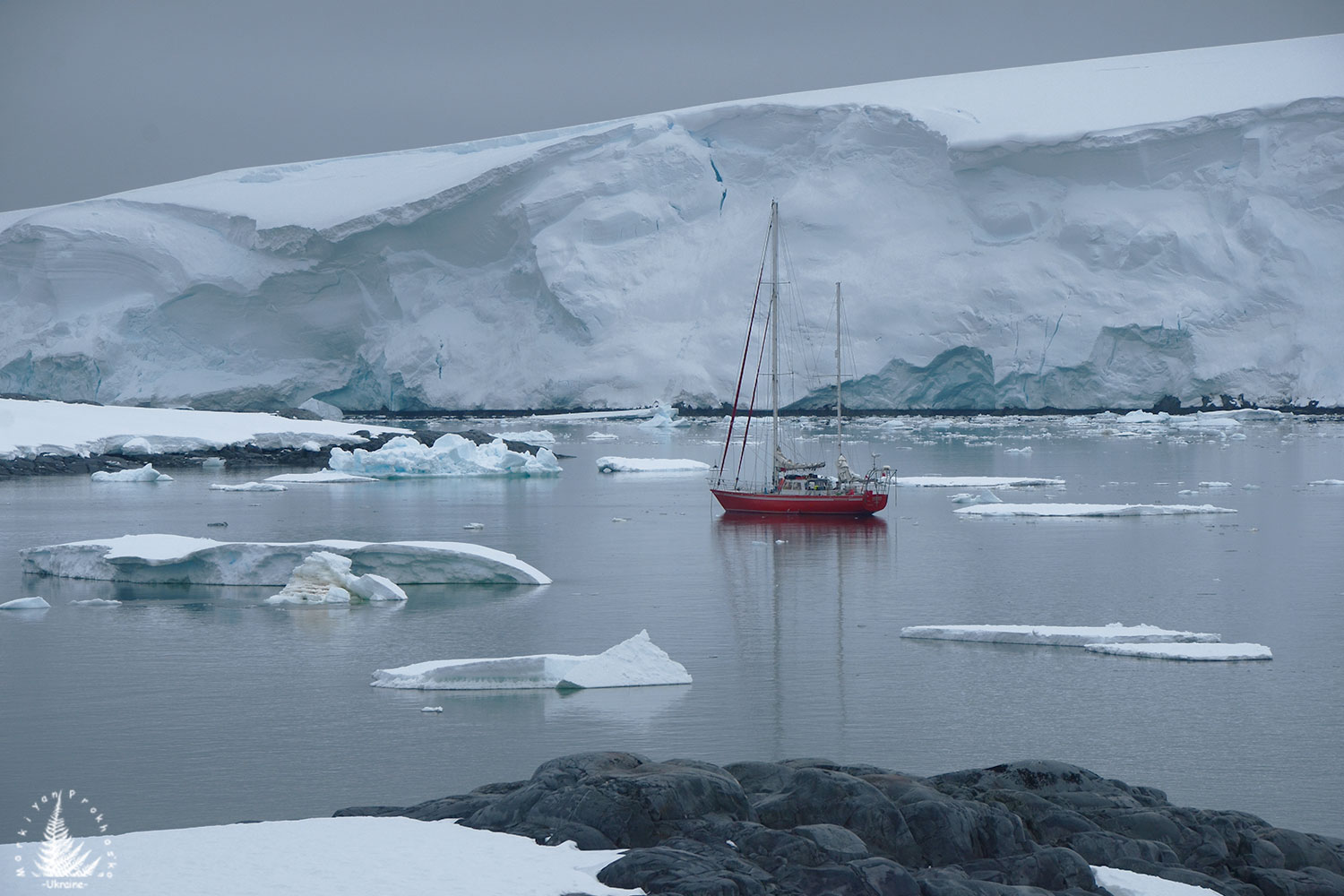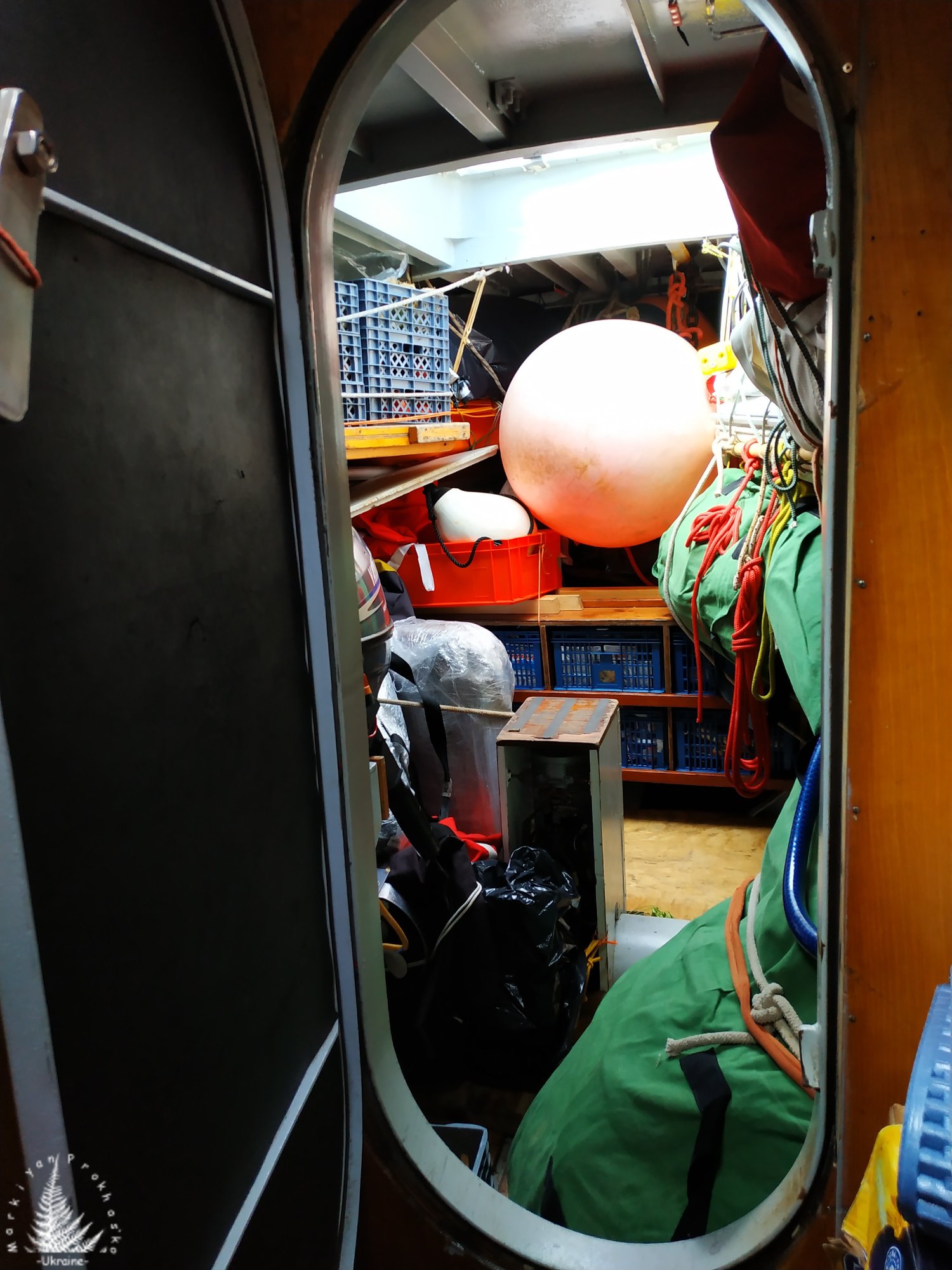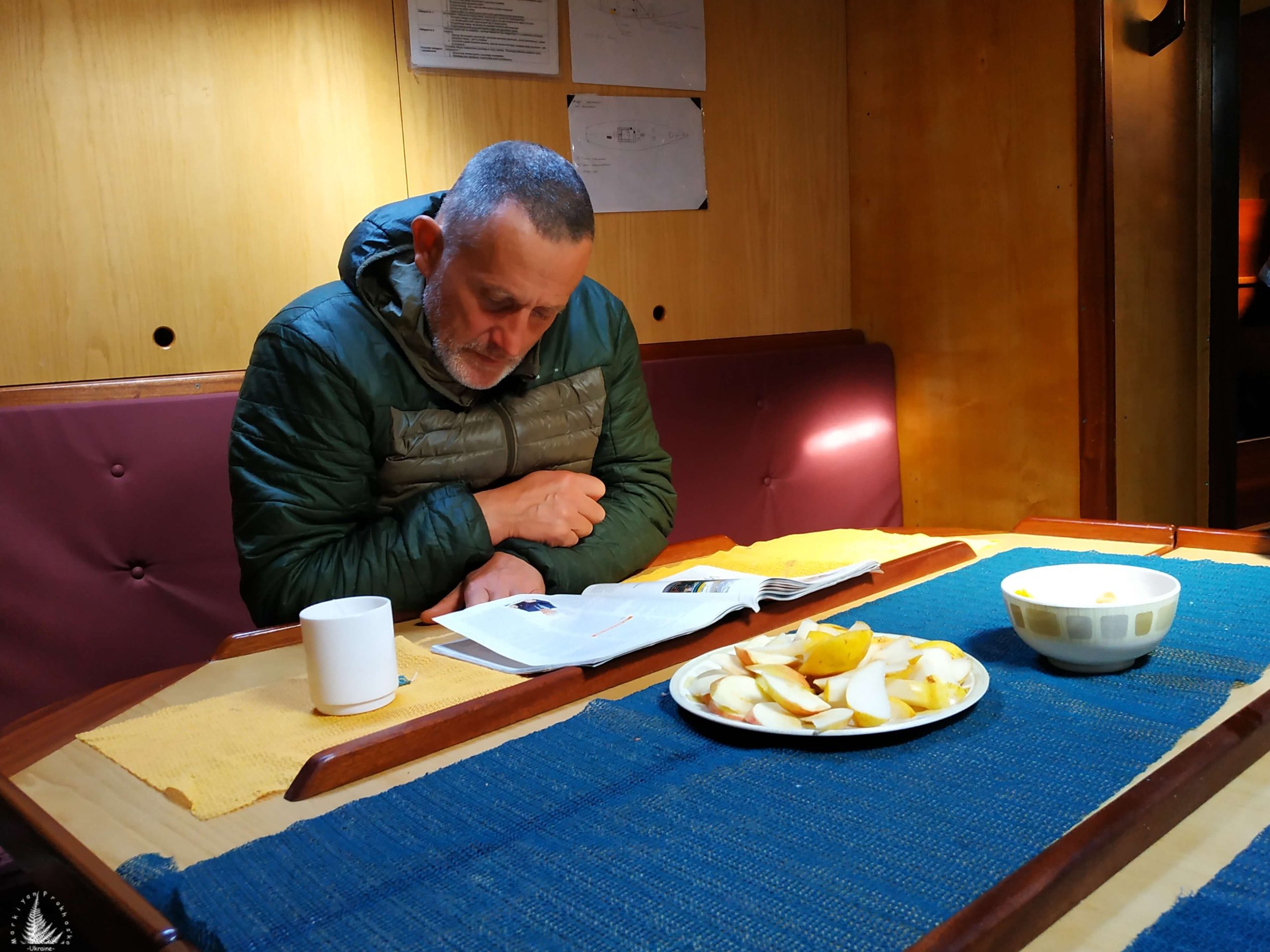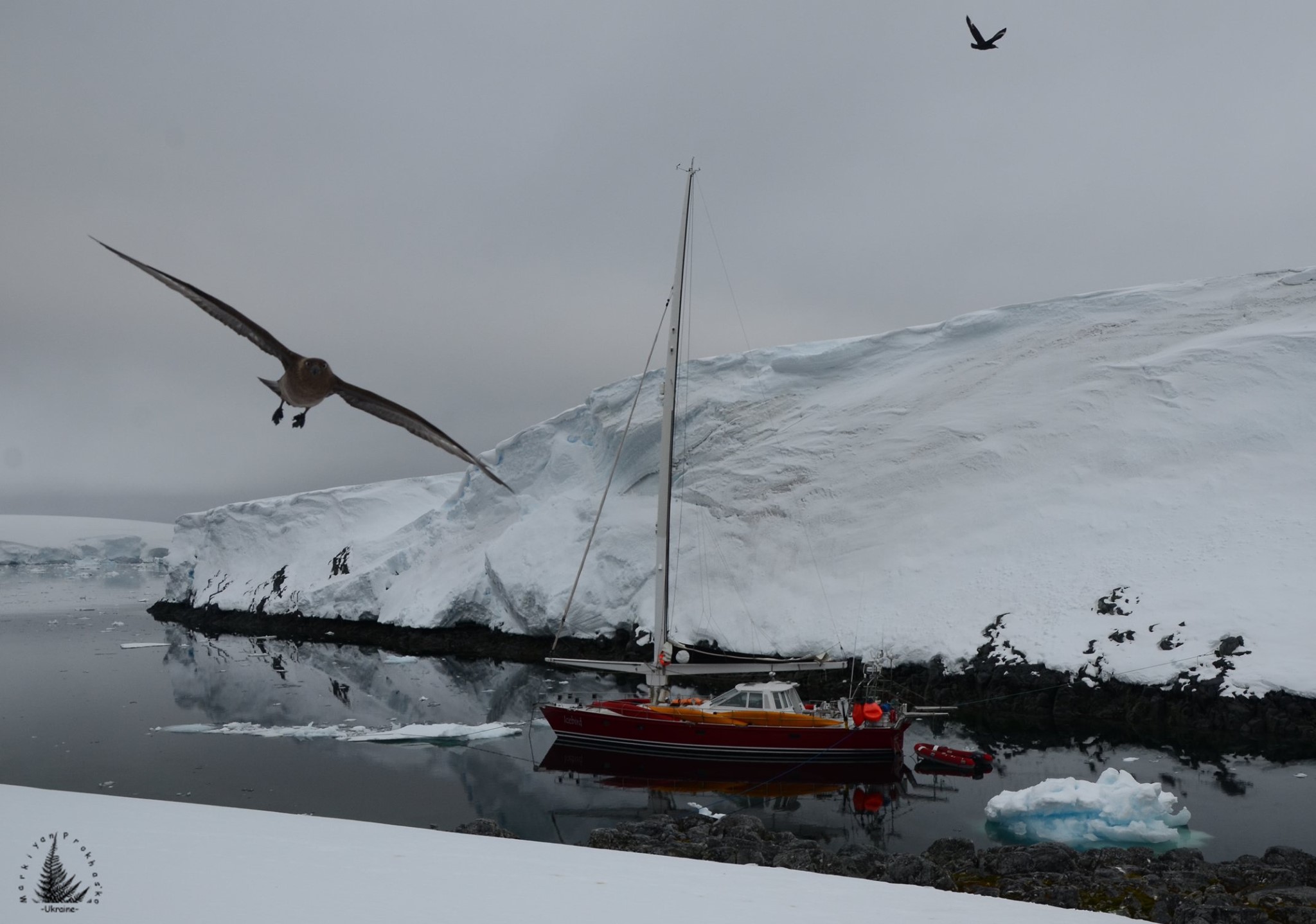“Selma” is a French-built yacht sailing under the Polish flag. She’s painted a distinctive red with white stripes. The cabin, which rises gracefully from the middle of the deck, is elegantly and smoothly integrated into the ship’s structure. Aft of the cabin is a rectangular, sunken area with benches and a raised section for the helm. This is where the cabin door opens out to.

Inside the pilothouse, to the left, is a cozy sleeping bunk for the captain. The instrument panel is in the center, housing a navigation computer, radar, a radio on top, and many other devices. Underneath the bunk and the instrument panel lies a tangled mess of wires, switches, and buttons. This is where you can, for example, turn on the external masthead lights. To the right, a staircase leads down into a small corridor.
Down the stairs
Heading down the stairs, you’ll find the mess hall (or messroom) to the left. From here, you can access three cabins and a large head (bathroom). A small passageway leads towards the bow, with two cabins on either side.
These are the cabins where you feel the motion of the sea the most. From the right-side cabin, another door leads into the yacht’s forepeak—the very front part of the bow. Whenever we opened this door, a distinct, heavy smell would waft out—a mix of metal, paint, rubber, outboard motor engines, fuel, and the compacted garbage we stored there. It was also where we kept our potatoes, carrots, and other produce. The space acted like a refrigerator, as it had no heating, and on all sides but one, a cold ocean separated by a metal wall.

When you’re feeling queasy, going to the “shop”—as we jokingly called the bow—or having to cook and clean was particularly unpleasant. The smells were worse on a sensitive stomach. But standing near the pipe that vented heat from the yacht’s heater was the absolute worst, even after the seasickness had passed. While I was still ill, I think that pipe was responsible for more than a few moments of nausea.
The third cabin is located closer to the middle of the boat and is accessed through a different corridor. Between this cabin and the one you access from the staircase is the engine room, or “maszynownia” in Polish. It’s essentially at the very center of the yacht and was a continuous source of a sharp, piercing noise when we were motor-sailing.
Engine
In fact, after we passed the Drake Passage and turned on the engine, everyone breathed a sigh of relief. The boat was sailing smoothly without being tossed by waves, as there was hardly any wind or swell in the Antarctic waters. But then, after the engine had been running for a long time and we finally dropped anchor one night, everyone sighed again. Even though the rocking had stopped, the continuous roar of the engine had given us all a massive headache. The quiet, calm, and relatively stable floor underfoot was an incredible relief.
…If you turn right from the stairs, a galley (kitchen) area runs along the corridor, nestled against the hull. It has a sink, a stove, and cupboards. All the cupboard doors are secured with latches.
The sink didn’t have hot or cold water—it had fresh (sweet) water and saltwater. There’s no pressure in the pipes, so to get water flowing, you had to pump it with a foot pedal. The same system was in the large head, where you could even change clothes, brush your teeth, and wash with wet wipes.
Ergonomics
The fresh water was stored in a tank under the floor and used exclusively for drinking and cooking. Fuel tanks were also somewhere beneath the floor. Honestly, who knows what else was down there? One of my first impressions of the yacht was how incredibly ergonomic she was. Not a single cubic centimeter of space was wasted.
At the end of the corridor, past the galley, was a second, smaller head. It was very uncomfortable to use. It was more of a spare, for when the main one was occupied and you had an urgent need to go. More often than not, that “need” was to throw up.
Opposite the galley was the entrance to the engine room. It was split into two levels. The engine was on the bottom and was covered by panels you could crawl on or remove to get to different parts of the engine.

Further down the corridor were three more cabins. One was next to the cabin, accessible from the mess hall. The other two were further aft. Behind them, there was yet another space called the “wachterpik”—the room at the very stern of the ship. It also had no heating and was used to store things like inflatable dinghies and various ropes. At least three of them were so thick and long that each one took up an entire sack. We used these three ropes for mooring the ship in coves, not in port.
Something for something
Once or twice at night, I went out in a dinghy with Piotr to the opposite shores of the cove to help secure the ends of those ropes to rocks. This was a critical task because if we failed, the yacht could be blown onto the rocks and cliffs.
Piotr himself once said in an interview that with “Selma,” it’s always “something for something.” She has a slightly old but unique design, built to handle storms. She may not have the comfortable cabins and spaces of modern yachts, but she handles extremely rough weather with grace.

No responses yet